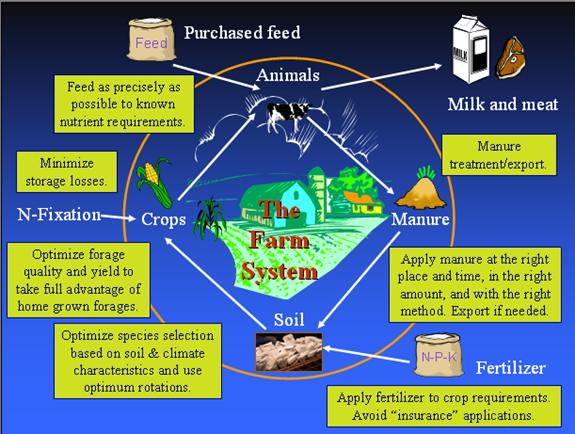Competency Area 6: Nutrient Management and Planning
Summary
- Nutrient Management Planning requires knowledge and accounting for all nutrient sources. Manure application must be based on crop nutrient needs, taking into account that manure nutrients and crop needs do not always match perfectly. Runoff and leaching of P and NO3- must be managed: depending on Phosphorus Index and Nitrate Leaching Index scores, BMPs may need to be implemented. Appropriate manure application setbacks should be utilized, and manure should be stored, applied, and managed in a way that reduces nutrient loss. Land Grant University guidelines should be adhered to.
- Crop nutrient requirements are best calculated using projected yields, crop rotation, field history and information, and data such as soil test results and PSNTs.
- The NRCS 590 Nutrient Management Standard provides guidelines for planning.
- Proper storage, treatment, and application of manure can reduce the risk of nutrient runoff, pathogen spread, and loss of air and water quality. Environmentally-sensitive areas should be identified and BMPs implemented when managing these areas.
- Whole-farm nutrient management involves all aspects of the operation: inputs (animal feed, fertilizer, etc) and outputs (milk, meat, crops, etc) must be considered, as should the impacts each has on the other. Precision feeding can reduce the amount and type of nutrients excreted in the manure, and proper application of that manure can improve crop yields and nutrient quality, while preventing environmental contamination.


